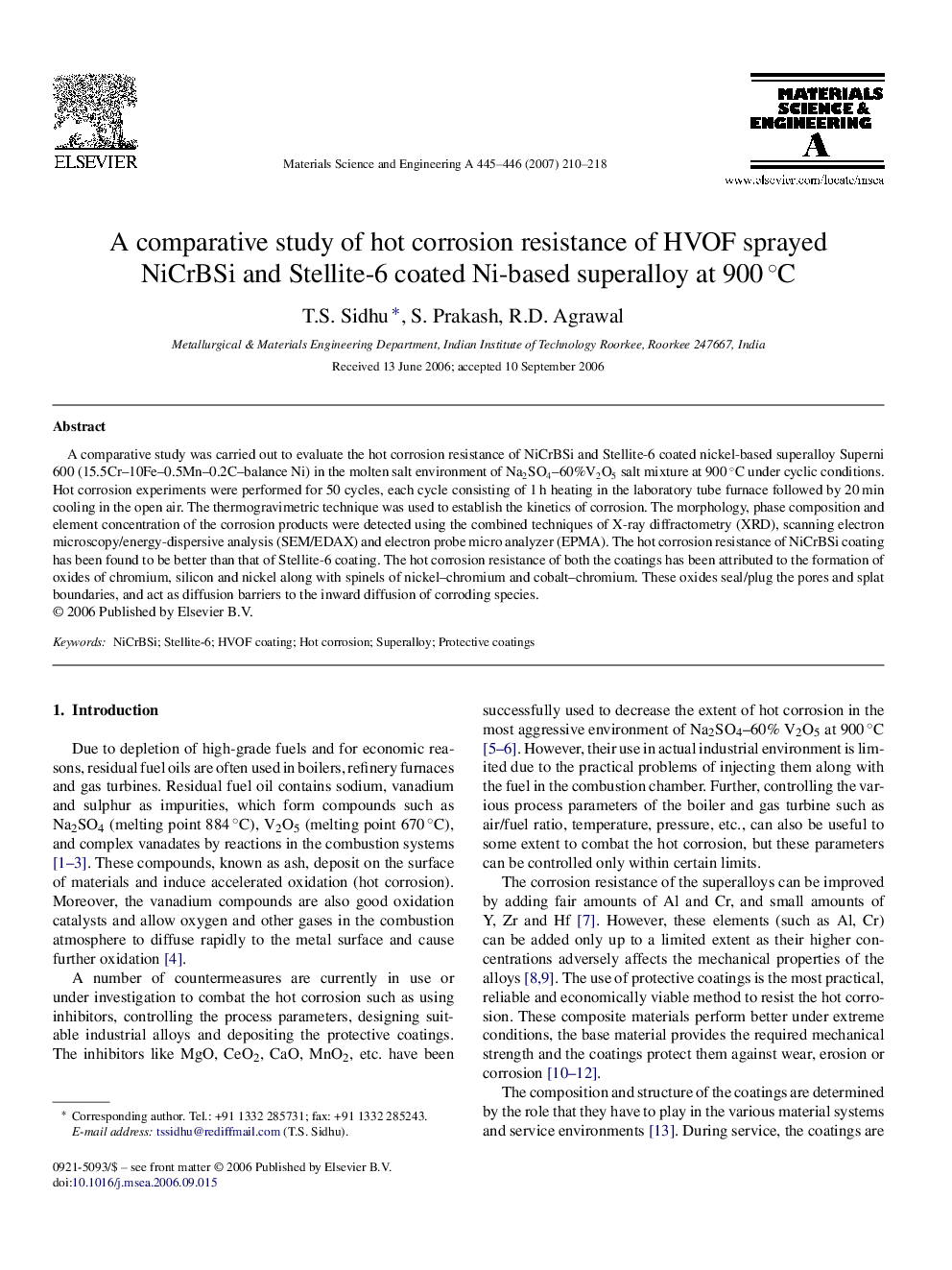| Article ID | Journal | Published Year | Pages | File Type |
|---|---|---|---|---|
| 1584417 | Materials Science and Engineering: A | 2007 | 9 Pages |
A comparative study was carried out to evaluate the hot corrosion resistance of NiCrBSi and Stellite-6 coated nickel-based superalloy Superni 600 (15.5Cr–10Fe–0.5Mn–0.2C–balance Ni) in the molten salt environment of Na2SO4–60%V2O5 salt mixture at 900 °C under cyclic conditions. Hot corrosion experiments were performed for 50 cycles, each cycle consisting of 1 h heating in the laboratory tube furnace followed by 20 min cooling in the open air. The thermogravimetric technique was used to establish the kinetics of corrosion. The morphology, phase composition and element concentration of the corrosion products were detected using the combined techniques of X-ray diffractometry (XRD), scanning electron microscopy/energy-dispersive analysis (SEM/EDAX) and electron probe micro analyzer (EPMA). The hot corrosion resistance of NiCrBSi coating has been found to be better than that of Stellite-6 coating. The hot corrosion resistance of both the coatings has been attributed to the formation of oxides of chromium, silicon and nickel along with spinels of nickel–chromium and cobalt–chromium. These oxides seal/plug the pores and splat boundaries, and act as diffusion barriers to the inward diffusion of corroding species.
